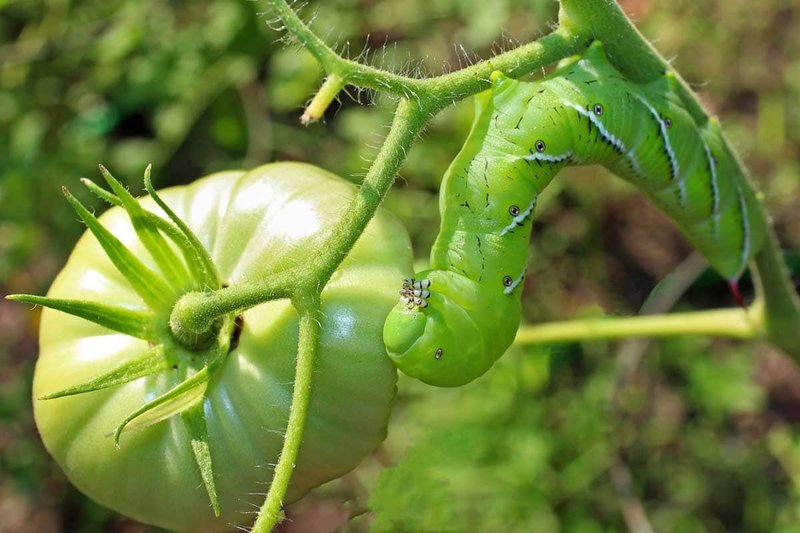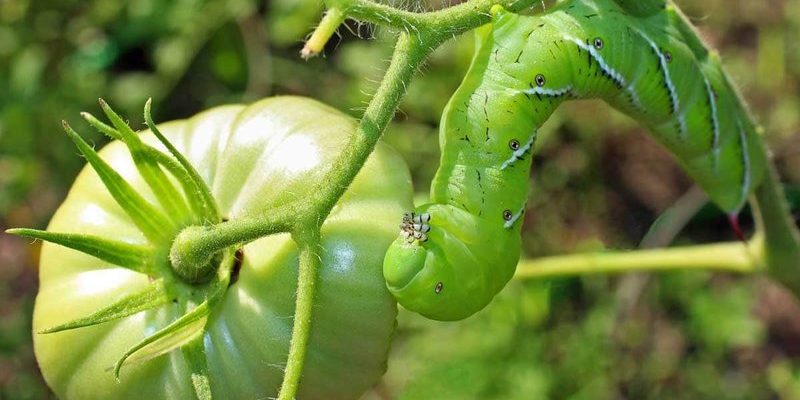
Here’s the thing: hornworms are masters of disguise, blending into the foliage of your plants. They tend to be more active during certain times of the day, and knowing when that is can save you a lot of trouble. I remember the first time I found one on my tomato plant; it was a bit like discovering a hidden treasure—except it was more like discovering a little monster! Let’s dive into the best times of day to catch these sneaky pests and what to look for when you’re on the hunt.
Understanding Hornworms and Their Behavior
Before we delve into the time of day to spot these guys, let’s set the stage. Hornworms, like the tomato hornworm, are the larval stage of certain moths. They’re usually about 3 to 4 inches long and come in a vibrant green color, making them look like a part of the plant itself. Their primary diet consists of the leaves of tomato, pepper, and eggplant plants.
Why are they such a problem? Well, hornworms can devour a significant amount of foliage in a short span. You might step out one morning and find your plants almost stripped bare. Watching them eat can feel like a horror movie, and trust me, once you spot one, you’ll want to act fast.
These little munchers are most active at night, which is why they can be hard to spot during the day. They like to munch on leaves under the cover of darkness. Knowing this is crucial because it influences when you should take a closer look at your plants.
The Best Times to Spot Hornworms
If you’re looking to catch a hornworm red-handed, the best times to scout for them are early in the morning or just before sunset. Here’s why:
1. Early Morning Hours: As the sun rises and the temperatures are still cool, hornworms might still be on the move. This time is typically the coolest part of the day, which makes it a great time to check for these sneaky pests. They’re likely done feeding and might be resting on the undersides of leaves or in the soil.
2. Just Before Sunset: As the day winds down and the sun begins to set, temperatures drop again, tempting hornworms to become more active. This is another prime time to spot them. They’ll go back to munching, but the declining light can reveal their green bodies against the backdrop of your plants.
How to Spot Hornworms Effectively
Now that you know the best times of day to look for hornworms, let’s talk about how to actually find them. Here are a few tips to help you in your search:
- Look Under Leaves: Hornworms often hide on the underside of leaves. Gently turning over leaves can reveal their presence.
- Look for Damage: Check for any signs of eaten leaves. When you see a leaf with irregular holes or stripped areas, inspect nearby sections closely.
- Use Your Senses: Sometimes you can hear the munching sounds in the quiet of the evening. Listen closely; you might be surprised at what you hear!
Honestly, you might even want to go out with a flashlight during the nighttime hours. The light will help you see their vibrant color and make them stand out against the foliage.
Other Signs of Hornworm Infestation
Sometimes, hornworms leave clues that can tip you off before you even spot one. These signs can help you identify an infestation:
1. Droppings: Hornworms produce waste that looks like tiny green pellets. If you notice these little droppings on your plants or the ground below, it’s a good indicator that hornworms are around.
2. Silken Threads: Look for silk that they produce, which might be found on the plant. This silk is often used to help them camouflage, so spotting it can be a critical clue.
3. Color Changes: If you notice your once-lush leaves suddenly looking wilted or discolored, it might be a sign of hornworm activity.
Keep your eyes peeled for these signs during your morning or evening checks.
What to Do If You Find Hornworms
So, you’ve spotted a hornworm! Congratulations on playing detective! Now, what do you do?
1. Hand-Picking: One of the easiest ways to deal with hornworms is to simply pick them off your plants. Wear gloves if you’re squeamish, and drop them in soapy water to eliminate them quickly.
2. Beneficial Insects: Consider attracting beneficial insects like birds or parasitoid wasps. They can help keep hornworm populations in check naturally.
3. Insecticidal Soap: If you have a heavy infestation, using insecticidal soap can help. Just be sure to follow the instructions carefully, and use it during the early morning or late evening to avoid harming beneficial insects.
Remember, the key is not to panic. Hornworms can be removed and controlled with diligence and care.
Preventing Future Hornworm Problems
After addressing the current hornworm issue, you’ll want to find ways to prevent them from returning.
- Crop Rotation: Changing the location of your plants yearly can reduce the chances of hornworm infestations.
- Regular Inspections: Make it a routine to check your plants, especially during the times we discussed. This will help catch problems early.
- Companion Planting: Some plants, like marigolds, can repel pests. Including them in your garden can help deter hornworms.
Implementing these preventive measures can save you time and frustration in the long run.
In conclusion, knowing the best time of day to spot hornworms is just as vital as taking the right action when you find them. Early mornings and evenings provide the best opportunities to catch these sneaky pests before they wreak havoc on your plants.
By staying vigilant, looking for signs, and employing preventive measures, you can protect your plants from hornworms effectively. Happy gardening, and may your plants thrive without the pesky munching of these green invaders!

